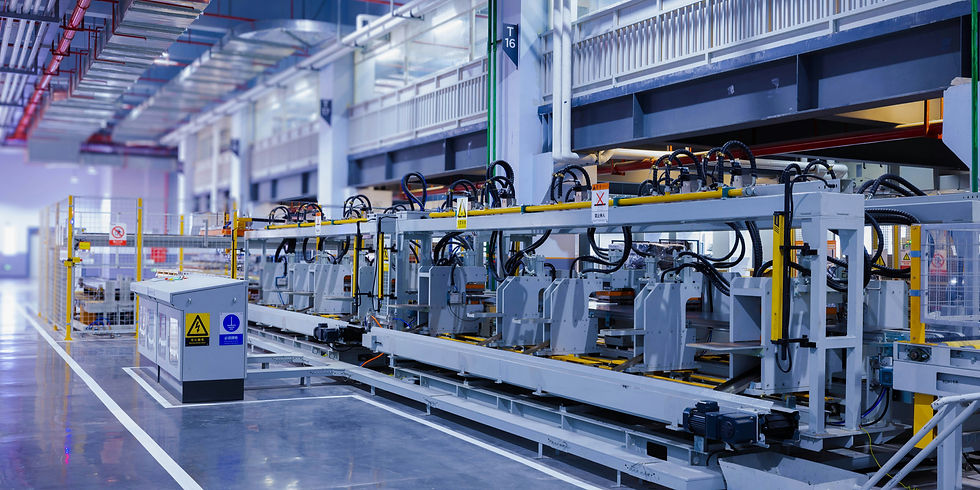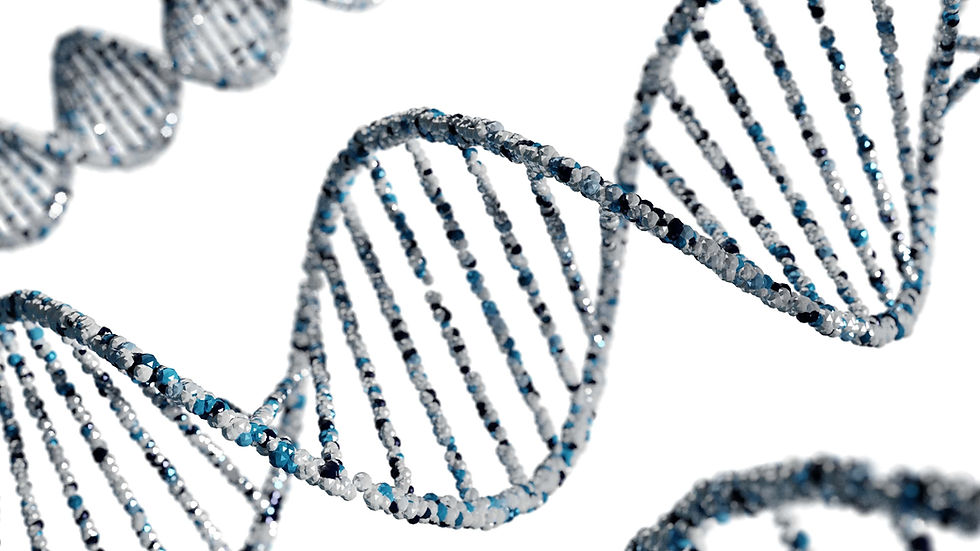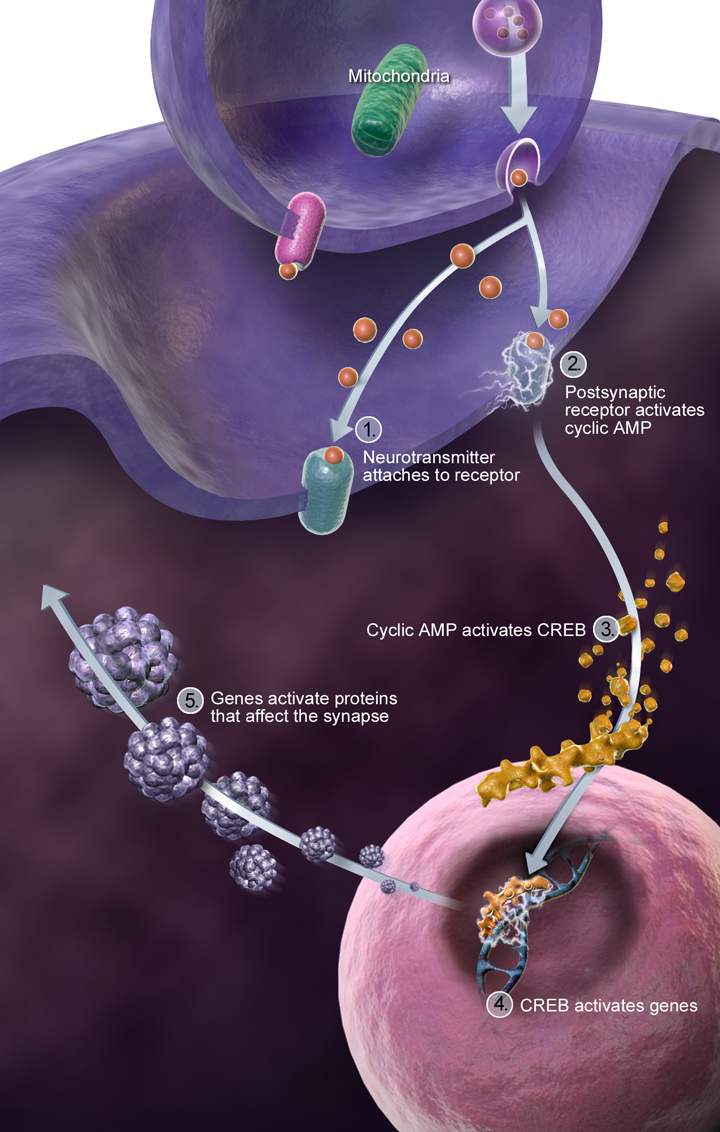The Making of Brain Cells: Reduced Neurogenesis in Down Syndrome
- neurosutton
- Jul 15
- 6 min read
Updated: Jul 25

Series note: There is a fantastic review (current state of scientific understanding) by Russo, Sousa, and Bhattacharyya out of Wisconsin. The authors cover topics from molecular and genetic causes and hypotheses to regional differences in the cortex. Because the paper goes through so many foundational ideas and taught me so much about Down syndrome, I’m going to walk through the sections of the paper in a series of posts. This post is the second installment. The review is not for the faint of heart, but it is well worth your time to read, if you enjoy the challenge of original research papers.
How to Share with Other Parents aka TL;DR
Individuals with Down syndrome have fewer neurons. There are a couple of reasons why this may occur, but regardless the cause, the pattern is established starting day 50 post-conception! Fewer neurons result in challenges for learning, memory, and information processing, contributing to the intellectual disability observed in individuals with Down syndrome (Abukhaled et al., 2024; Robinson et al., 2024)
Previously, we drew upon the metaphor of the developing brain as a symphony. As we extend the metaphor, consider each neuron like a musician in the orchestra, responsible for playing a specific part at just the right moment. When the timing is right and the ensemble is full, the music is rich, layered, and beautifully coordinated. In Down syndrome (DS), the symphony begins with fewer musicians due to reduced neurogenesis. Neurogenesis is the technical term for the creation of new neurons. This process begins day 50 post-conception (Russo et al., 2024). Alterations in these earliest of days create distinctive overtures that profoundly influence how the mind learns, remembers, and connects with the world.
What Is Neurogenesis?
Neurogenesis is the process by which neural stem and progenitor cells divide and mature into the neurons that form the brain’s intricate networks. This process is most active during fetal development and early infancy, when the brain’s core architecture is being laid down. Like musicians waiting for their cue in a complex piece of music, neural progenitors must divide, mature, and “chime in” the brain’s circuitry at precisely the right time to support healthy development.
What Happens in Down Syndrome?
In DS, research reveals a consistent and striking reduction in neurogenesis, especially during the fetal and early postnatal periods. This means that fewer neurons are produced at the very stages when the brain’s architecture is being established. The consequences ripple outward, shaping everything from the size of brain regions to the complexity of neural circuits.
Key Findings from Recent Research
Fewer Neurons from the Start: Studies of fetal and neonatal brains with DS show significantly fewer neurons, particularly in regions critical for cognition such as the hippocampus and cortex.
Slower Proliferation and Early Exit: Neural progenitor cells in DS divide more slowly and may leave the cell cycle prematurely, reducing the overall pool of cells that can become neurons.
Cell Death and Sensitivity: While some studies suggest increased cell death (apoptosis) in DS neural progenitor cells, the evidence is mixed. However, fetal DS neurons appear more sensitive to oxidative stress, which could further impact survival.
The glorious nitty, gritty details
Markers of Reduced Neurogenesis: There are fewer proliferating cells (marked by proteins like Ki67 and cyclins) and a reduced number of neural progenitors (SOX2+) in the germinal zones of the DS brain.
Interneuron Deficits: The cortex of individuals with DS contains fewer interneurons, which are essential for balancing brain activity. This may be due to impaired neurogenesis, faulty migration, abnormal maturation, or increased cell death. Interestingly, iPSC-derived interneuron progenitors from individuals with DS also show reduced migratory ability, though findings on interneuron numbers can vary depending on the model system used.
A Symphony with Fewer Musicians
When the musicians take the stage in Down syndrome, there are fewer of them. The music is still beautiful, but some harmonies are missing, and the sound is less full. When fewer neurons are available, the resulting circuits are less complex and less efficient. Disrupted timing for new neurons to be formed contributes to the cognitive and behavioral differences seen in Down syndrome, including challenges with memory, language, and executive function. Though there will always be differences, early intervention can help support the amazingly adaptable developing brain.
Overcoming Fewer Neurons: Potential Therapeutic Targets and Living Fully
Let’s take a moment to step back from cellular machinery and think about the big question every parent (and scientist) eventually faces: Can we do anything about fewer neurons? How do individuals with Down syndrome not only survive but thrive and, in many cases, live deep, meaningful, and even “normal” lives?
Cutting-Edge Strategies: Unlocking Brain Potential
Research is steadily pushing the boundaries on both biological therapies and whole-person strategies that may help compensate for or even restore neurogenic deficits in Down syndrome (DS):
Pharmacological Interventions
Several promising compounds are being tested in animal models to enhance neurogenesis or neuronal plasticity.
For example:
Fluoxetine, a selective serotonin reuptake inhibitor, has been shown in DS mouse models to restore neurogenesis, dendritic complexity, and even memory function far into adulthood when given early in life (Stagni et al., 2022). The impact was not only biological but translated into more robust hippocampal circuitry—the seat of learning and memory.
Lithium is being investigated for its ability to enhance neurogenesis and synaptic function in specific brain regions (Guidi et al., 2015).
DYRK1A inhibitors, such as the ALGERNON compound, target overexpressed genes in DS and have shown potential to rescue neuronal proliferation and prevent cognitive deficits in Ts65Dn mouse models (Nakano-Kobayashi et al., 2017).
Choline supplementation and modulation of GABAergic and NMDA receptor signaling are also under investigation for their neuroprotective effects (Martínez-Cué et al., 2019).
Non-Pharmacological Interventions
Environmental enrichment – richer learning environments, early and ongoing education, and strong social supports – can drive plasticity in the DS brain, making the most of each neuron and nurturing cognitive resilience (Martínez-Cué et al., 2019).
Lifestyle and community support. Exercise, social engagement, and building independence skills contribute significantly to cognitive and emotional health. Daily living programs, occupational therapy, and strong social networks are all associated with improved life outcomes, regardless of neuron count (Picower Institute, 2025).
Living Well with Fewer Neurons: Human Adaptation in Action
Here’s the truth: While these molecular advances are thrilling, decades of lived experience and population research make it absolutely clear that the number of neurons is never the whole story. Many individuals with DS, especially those who receive nurturing, education, and social inclusion from an early age, grow into adults who live rich, fulfilling, and increasingly independent lives (Global Down Syndrome Foundation, 2025).
How?
The brain is remarkably plastic. Surviving neurons form new connections and adapt in response to life’s challenges (Martínez-Cué et al., 2019).
Adaptive interventions - ranging from music therapy to scaffolded learning and community engagement - allow individuals to maximize cognitive strengths and support areas of need (Down Syndrome Resource Foundation, 2025).
Emotional support, a sense of purpose, and opportunities for peer interaction foster lifelong growth, even in the face of initial biological limitations.
Invitation: Rethinking “Normal”
Perhaps the greatest lesson from both science and lived experience is that thriving with Down syndrome is not about achieving a textbook “normal.” Instead, it’s about recognizing that each child is a unique. (In my opinion, those within the Down syndrome community do that well. Just take a look at the advocates splashing joy all over Instagram and Facebook.) It's also realizing that every day offers a chance for new connections, resilience, and surprising symphonies.
Next time on Brainwaves and Chromosomes
One of the possible reasons (mechanisms) for fewer neurons, early cell cycle exit, plays into the next topic in this series: Altered Gliogenesis and Myelination. Besides being fascinating, here is a reminder of why we should care about all these intricate neuroscience concepts and why it is worth your time. Understanding the underlying factors encourages us to celebrate each milestone and wonder at how much those with Down syndrome overcome every day. Let that goal spur us on to embrace curiosity….
References
Abukhaled Y, Hatab K, Awadhalla M, Hamdan H. Understanding the genetic mechanisms and cognitive impairments in Down syndrome: towards a holistic approach. J Neurol. 2024 Jan;271(1):87-104. doi: 10.1007/s00415-023-11890-0. Epub 2023 Aug 10. PMID: 37561187; PMCID: PMC10769995.
Down Syndrome Resource Foundation. (2025). Life skills: Supporting independence across the lifespan. https://www.dsrf.org/independent-living/
Global Down Syndrome Foundation. (2025). Improving quality of life for adults with Down syndrome. https://www.globaldownsyndrome.org/qol
Guidi, S., Bonasoni, P., Ceccarelli, C., Santini, D., Gualtieri, F., & Ciani, E. (2015). Timing of therapies for Down syndrome: The sooner, the better. Frontiers in Behavioral Neuroscience, 9, 265. https://doi.org/10.3389/fnbeh.2015.00265
Martínez-Cué, C., Martínez, P., Rueda, N., Vidal, R., & Dierssen, M. (2019). Plasticity as a therapeutic target for improving cognition and behavior in Down syndrome. Progress in Brain Research, 249, 199–223. https://doi.org/10.1016/bs.pbr.2019.03.015
Nakano-Kobayashi, A., Awaya, T., Kii, I., Sumida, Y., Okuno, Y., Yoshida, S., Inoue, H., Hosoya, T., & Hagiwara, M. (2017). Prenatal neurogenesis induction therapy normalizes brain structure and function in Down syndrome mice. Proceedings of the National Academy of Sciences, 114(38), 10268–10273. https://doi.org/10.1073/pnas.1704141114
Picower Institute for Learning and Memory. (2025). Ensuring healthy lifespan in Down syndrome. Massachusetts Institute of Technology. https://picower.mit.edu/research/DS-aging
Robinson J, Chawla N, Patel S, Spey E, McNulty O, Kaur G. Neurodevelopmental Abnormalities in Down Syndrome: Assessing Structural and Functional Deficits. Cureus. 2024 Dec 21;16(12):e76156. doi: 10.7759/cureus.76156. PMID: 39845250; PMCID: PMC11750628.
Russo, M. L., Sousa, A. M. M., & Bhattacharyya, A. (2024). Consequences of trisomy 21 for brain development in Down syndrome. Nature Reviews Neuroscience, 25(11), 740–755.
Stagni, F., Costa, M., Villa, A., & Bartesaghi, R. (2022). The challenging pathway of treatment for neurogenesis impairment in Down syndrome: Achievements and perspectives. Neuroscience & Biobehavioral Reviews, 132, 720–735. https://doi.org/10.1016/j.neubiorev.2021.12.009





コメント